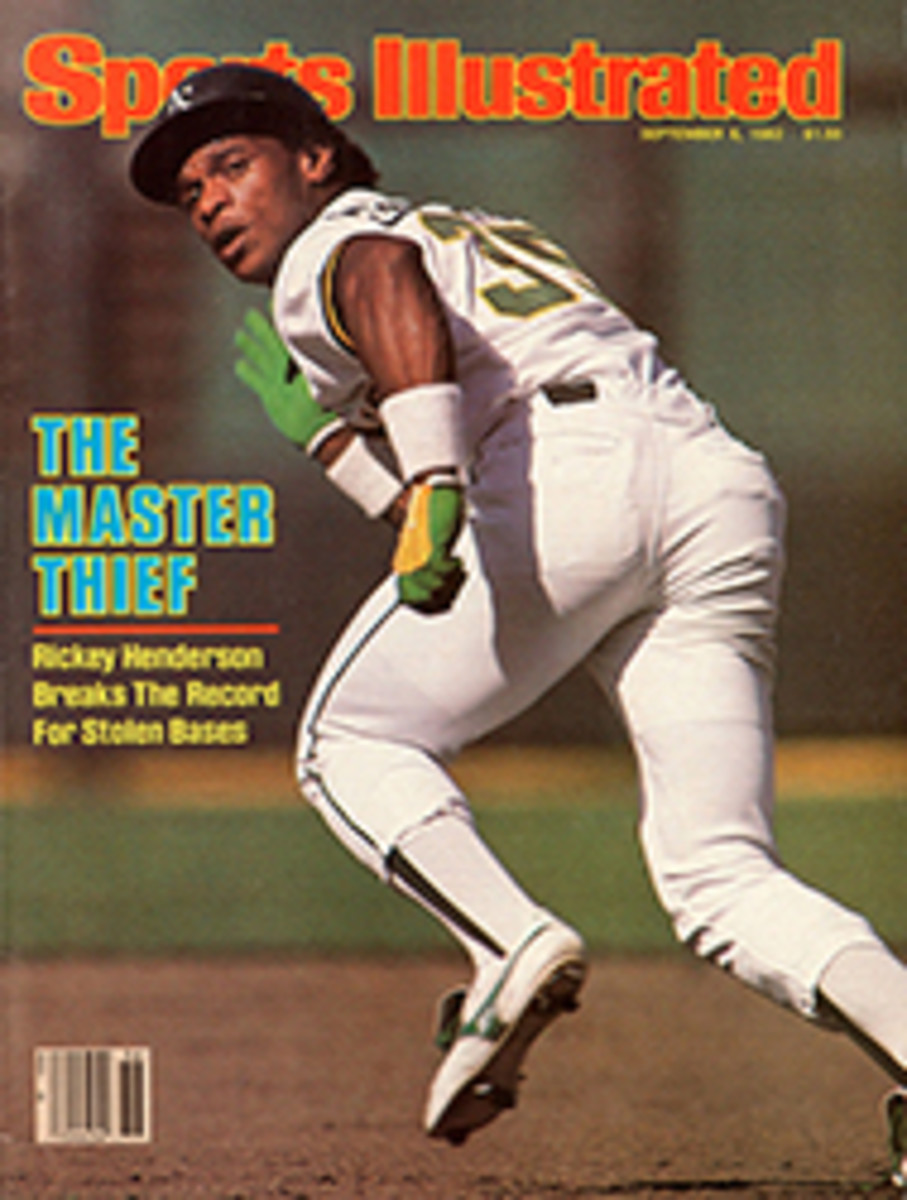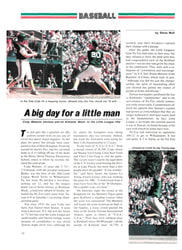
A Ram Almost Upstaged The Walrus
There was a money war in professional golf last week, and before it was over on Sunday in the fading light at the Firestone Country Club in Akron, the two guys who had earned the most in 1982, Craig Stadler and Raymond Floyd, had to play four sudden-death holes to determine which one would get out of town with the biggest paycheck of the year, the $100,000 first prize of the World Series of Golf. The extra holes wound up being more of a chip-off than a playoff. Stadler, the Masters champion, defeated Floyd, the PGA winner, because Stadler had unintentionally given himself chipping practice on the preceding holes and because Floyd uncharacteristically hit a simple chip that took off as if it were on steel-belted radials.
After Stadler and Floyd had tied in regulation at 278, had parred the first three playoff holes and had driven magnificently at the 392-yard par-4 17th, it seemed likely that one of them would pitch close to the pin and then sink a birdie putt. Both went for the flag, but leaked their shots off to the right of the green. Stadler had become accustomed to this. He barely hit the green when the playoff began, at the 14th hole, but he two-putted from about 90 feet to stay alive. He missed the green at the par-3 15th, but chipped up to salvage a par. He missed the green at the par-5 16th from only 120 yards, but again he survived with a tidy chip, while Floyd watched his own 20-foot birdie putt miss the cup by the width of a gnat's eyelash.
Now here they were in the rough off the 17th green. Stadler chipped first and put the ball about two feet from the cup. Floyd then knocked his shot 10 feet past the hole. When Floyd missed the putt for par, Stadler stepped up to his two-footer for a hundred grand and struck it about the way you would expect your partner to in your Sunday foursome. He put it right in the side door.
The ball did go in, however, and when you consider that Stadler had shot a closing round 65, five under par, to catch Floyd, you had to think the appropriate fellow was ultimately rewarded. The fact is, the Walrus' 65 was not only the low round of the tournament but also the only round without a single bogey.
Floyd had a three-stroke lead on the exclusive field of 25 golfers after 54 holes. He had fired rounds of 69, 71 and 68, and it appeared that Stadler, five strokes behind, had the best chance of making a run at Floyd, because Bob Shearer and Isao Aoki, for all their charm, didn't seem capable of overtaking as tough a frontrunner as Floyd. Besides, Stadler had played aggressively all week and had flirted with lower rounds than the 70, 68 and 75 he shot.
"Everything about this course suits my game," said Stadler. "It's long, and I'm long. It mostly sets up left to right, and I mostly play left to right. In a way, I feel like I've escaped, but in another way, I think I played good enough to win."
From the beginning, the five players vying to become the tour's leading money-winner figured to be the leading contenders at the World Series. Those five and their money totals going into Akron: Floyd ($331,809), Stadler ($328,101), Tom Kite ($308,076), Tom Watson ($296,715), Lanny Wadkins ($290,138). Coming out, Stadler had $428,101 and Floyd $386,809. The other three still have an outside chance at the money title, and some or all of the top five seem likely to enter more tournaments before the '82 tour concludes with the Walt Disney World Classic Oct. 28-31. "I think we'll all play more tournaments than we'd originally planned because of the money race," said Stadler. "I know my wife is going to make me try to hold the lead."
Stadler's victory was his fourth of the year. If Floyd had won, it would have been his fourth as well. Watson is the only other player to win four events in 1982, and he's still the favorite to end up as the Player of the Year because of his victories in the U.S. and British opens. But he had a mildly embarrassing week in Akron for a reason that had nothing to do with his 10th-place finish. His trouble began before the tournament started with a bulletin posted on the locker room wall:
The Golden Ram Pro Tour B golf ball, white or orange, does not conform with the rules of golf and has been withdrawn from the USGA list of conforming golf balls. It shall not be used until further notice.
—PGA Tour Rules Committee
Because Watson has been using that ball for more than a year, the news was intriguing, to say the least, and could easily have become a more scandalous story than it was if the media had been in a muckraking mood. At the PGA last month, all the brands of golf balls used on the tour had been collected for one of those periodic routine checks run by the USGA, and Watson's ball had failed. It was too small and therefore what the pros call "hot," meaning it gets greater distance.
People with suspicious minds might have said aha, Watson's been winning with an illegal ball. However, several things should be said on his behalf. First, Watson wouldn't knowingly use an illegal golf ball. If it was illegal before the PGA, he didn't know it, and if it was illegal there, it didn't help him finish better than ninth. Second, the difference between his so-called hot ball and one that isn't is minuscule, both in size and performance. Also, a hot ball isn't much of an advantage unless you hit it straight. The ball that gets a few extra yards is hardly a thing of beauty if it has been aimed at a lake or the deep rough. Watson won his majors with skill and guts, not by means of an unfair edge.
Tour officials such as Clyde Mangum and Jack Tuthill have sizing rings that they sometimes put a player's ball through to make sure it conforms. The ball is supposed to linger in the ring and then go through. Last week Mangum laughed at the "ball scandal," saying, "If you tested all of the balls in cold weather, they would drop through like peanuts."
To his credit, Watson met the problem head on. The day before the tournament he marched into the press room and said, "I know what the first question is: 'What's wrong with the golf ball?' " He explained the situation as well as he understood it and said he would, for the time being, switch to a Ram ball that had passed the test. So much for what passed for a scandal in Akron, except that Ram will probably increase its ball sales.
Illegal balls were a lot more fun in the old days. Players looking for an edge used to shoot them up with needles—putting lead in the center—to get more distance. Well, the World Series playoff didn't meet the game's exacting standards, either. Mere pars on those four holes were good enough for Stadler. And, finally, if anybody's ball looked hot, it was Floyd's when his chip blew across the green and did him in.
PHOTO
TONY TOMSIC
Floyd's finesse on the greens was sabotaged by a ghastly chip in sudden death.
PHOTO
TONY TOMSIC

